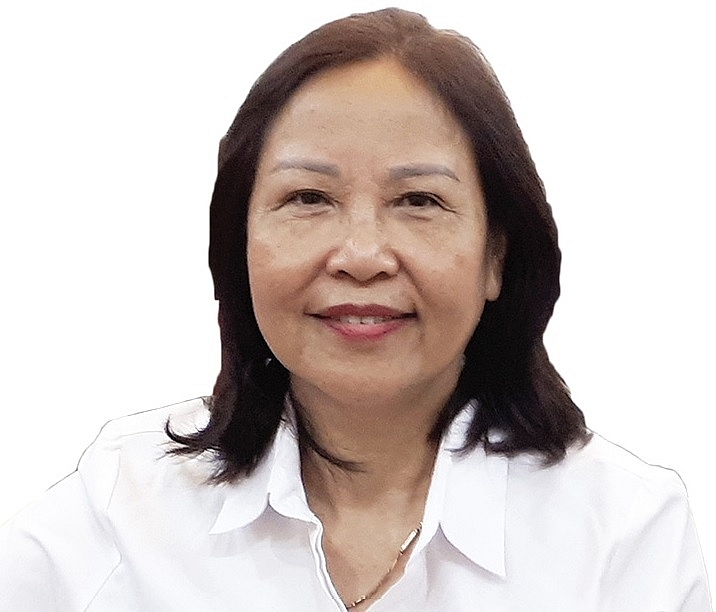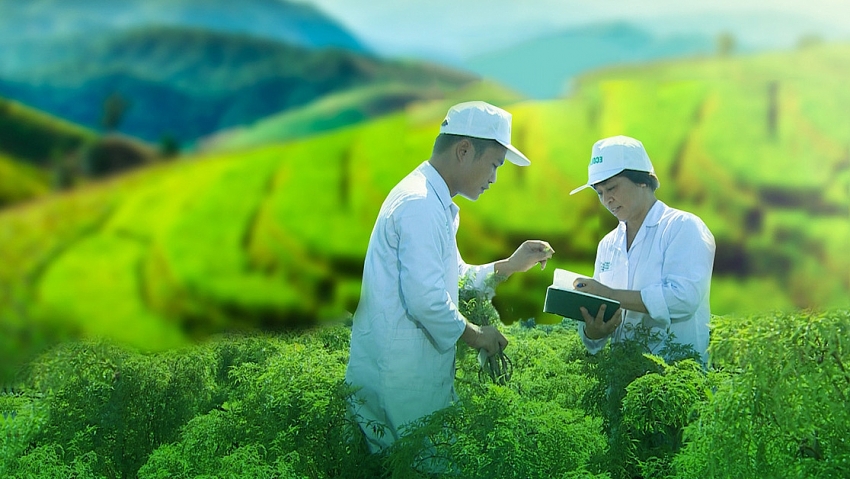Traphaco sets down on path to circular growth
 |
| Vu Thi Thuan, chairwoman of Traphaco |
More and more firms turn to circular economy to ensure sustainable development. How does Traphaco apply this model in its operations to maximise value and protect the environment?
Traphaco is now the No.1 traditional medicine maker in Vietnam. We are a pioneer of the pharmaceutical industry by developing a green value chain by co-ordinating economic efficiency with corporate social responsibility and environmental protection. We began pioneering green growth by opening a green factory in 2002 with a herbal cultivation area meeting GACP-WHO standards in Sapa. We have a green value chain, stretching from green cultivation areas to green technology, green products, and green services. Regarding green cultivation areas, we now have five herbal cultivation areas meeting GACP-WHO standards in many areas such as Sapa, as well as Nam Dinh, Phu Tho, Phu Yen, and Tay Ninh provinces, strictly following environmental protection principles from sowing the seeds through cultivation techniques to harvesting and processing, with special care when it comes to water, green fertilisers, and green land. To regenerate materials at the end of each crop cycle, we have been researching the best indigenous plants in our herbal cultivation areas and educating people about harvesting techniques where we only harvest the parts needed while ensuring the development of others. What is more, with these herbal cultivation areas, we generate sustainable jobs for the residents of mountainous and rural areas, improve their cultivation skills, and educate them about environmental protection, thus protecting the biodiversity and culture of herbal treatment.
We have advanced and environmentally friendly technology at our new VND500 billion ($22.7 million) western medicine plant. We apply green technology and import equipment from developed countries to ensure that the manufacturing process meets the highest standards, thus helping to optimise operational efficiency and cutting carbon dioxide (CO2) emissions, saving electricity and water. At our factories, especially the new one, we recycle bagasse drugs from herbal medical production into energy, thus decreasing fossil energy usage. At the western medicine plant, 25 per cent of the total investment went into the waste treatment system to recycle wastewater into running water.
We have a closed manufacturing process which maximally reduces the use of intermediate products made from nylons and plastics. We also use glass drinking-water bottles, while blisters of medicine are now made from paper or aluminium, instead of polyethylene plastics as in the past.
For other nylons, Solven and other chemicals, we are co-operating with authorised agencies to collect, classify, and send them to specialised treatment units. Traphaco is also working with satellite firms to recycle and process raw materials on the spot and ship them to its factory for production. this process helped Traphaco save on logistics costs and cut down CO2 emissions.
 |
| Traphaco sets down on path to circular growth |
What are the highlights of Traphaco’s sustainable development journey? What are the company’s plans for 2019 to keep the green growth on track?
2018 was an important year marked by prestigious awards such as the Vietnam Value Award for the fourth consecutive year and the Vietnamese Yellow Star Award, as well as being named among the top 10 sustainably developing companies for the third consecutive year, and the top 50 listed companies in Vietnam. It was the second year when we realised our ambitious growth targets through continued focus on developing the green value chain by developing the five herbal cultivation areas to meet GACP standards, and hi-tech factories to GMP-WHO standards. We also concentrated on developing our distribution network and launched new products throughout the year – and earned a revenue surpassing 222 per cent of the set annual target, which helped us to stand tall in the local market.
Thanks to bold moves to protect the environment in 2018, electricity consumption was reduced by 50 per cent from 2017, while water consumption fell by 44.2 per cent, saving production costs and increasing operational efficiency.
Driven by this growth momentum, we set even higher targets for this year, with a revenue growth of 16 per cent on-year and a 30 per cent rise in profit, despite mounting competition and global challenges. To achieve these targets, Traphaco will continue to develop our green value chain in line with the company’s sustainable development strategy for the 2017-2020 period.
Through international co-operation, a growing number of pharmaceuticals are upgrading technology, while increasing Vietnam’s access to brand name medicines. What is Traphaco’s strategy for this?
Generally, Vietnamese research and development (R&D) activities mainly serve the manufacturing of generic drugs from off-patent pharmaceuticals, while the other focus is on researching the production of drugs from natural materials.
The development of a brand name drug is estimated to take about $30-40 million and 12 years of R&D.
Amid increasing global integration, international co-operation is an effective tool for pharmaceutical firms to approach new and advanced technology globally, and enable them to produce brand name drugs at home, thus increasing the localisation rate, generating jobs, and providing people access to high-quality medicine, while easing reliance on imports. With this in mind, we have signed a memorandum of understanding with South Korea’s Daewoong Pharmaceutical to co-operate in the exclusive distribution of some of their products in Vietnam. Additionally, Daewoong’s technology transfer will help Traphaco to produce some of their products at our Hung Yen factory and will facilitate our R&D activities. Looking forward, we plan to co-operate with more multinationals to raise our operational efficiency and tap into the growth potential of the industry, which is forecast to enjoy double-digit growth in the next five years, reaching an estimated $7.7 billion in 2021 from the current $5 billion.
What the stars mean:
★ Poor ★ ★ Promising ★★★ Good ★★★★ Very good ★★★★★ Exceptional
Themes: Towards Sustainability
Related Contents
Latest News
More News
- Energy efficiency in buildings tops organisations’ infrastructure priorities (December 11, 2025 | 10:40)
- How smart infrastructure and digitalisation power the systemic transition (December 11, 2025 | 10:00)
- Lawmakers split over VAT on fertilisers and animal feed (December 10, 2025 | 18:56)
- Kim Long deal marks turning point for Vietnam’s auto industry (December 10, 2025 | 18:44)
- Pernod Ricard Vietnam supports flood-hit localities (December 10, 2025 | 14:18)
- SABECO honoured at Vietnam M&A Forum for outstanding deal of 2024-2025 (December 10, 2025 | 12:00)
- Vietnam raises taxable revenue threshold for household businesses to VND500 million (December 10, 2025 | 11:34)
- Vietnam M&A Forum 2025: new position, new momentum (December 09, 2025 | 14:30)
- Masan Consumer reveals HSX listing roadmap (December 09, 2025 | 14:09)
- Industrial sector posts robust gains as year-end demand rises (December 09, 2025 | 13:38)

 Tag:
Tag:






















 Mobile Version
Mobile Version